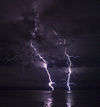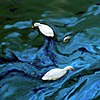Portal:Natur
| Denna sida är museimärkt och hålls inte längre uppdaterad. Den behålls främst av historiska skäl. Se eventuellt diskussionssidan för mer information. |
PORTAL:NATUR | ||||||||||||||||||||||||||||||||||||||||||||||||||||||||
|
|
| ||||||||||||||||||||||||||||||||||||||||||||||||||||||
Afrika · Akvariefiskar · Amerika · Arkeologi · Arkitektur · Astronomi · Bilsport · Danmark · Datorspel · Djur · Djurparker · EU · Europa · Finland · Frankrike · Fåglar · Georgien · Golf · Göteborg · Helsingborg · Irland · Ishockey · Island · Italien · Kina · Kroatien · Lund · Mars · Matematik · Musik · Natur · Portugal · Rock · Religion · Samhälle · Scouting · Serbien · Skåne · Spanien · Språk · Stockholm · Sverige · Sydamerika · Teknik · Tyskland · Växter · fler… | ||||||||||||||||||||||||||||||||||||||||||||||||||||||||
| |||||||||||||||||||||||||
Media som används på denna webbplats
Museum icon
Författare/Upphovsman: User:Fir0002, Licens: GFDL 1.2
Long Tongued Tachinid Fly, Subfamily Dexiinae, Senostoma sp, feeding on a flower's nectar in Melbourne. Specimen is approx 12mm in size.
Författare/Upphovsman:
| This photo was taken by Roman Bonnefoy ( Romanceor [parlons-en]). Feel free to use my pictures, but please credit me as the author (as required by the license). An email or a message would be welcome. More free-licensed pictures on my french Wikipedia account. |
Araucaria araucana
Författare/Upphovsman: Kristian Peters -- Fabelfroh, Licens: CC BY-SA 3.0
Plagiomnium affine, Laminazellen, Rostock
Författare/Upphovsman: Benjamint444, Licens: CC BY-SA 3.0
An Emerald Tree Boa, Corallus caninus
A photograph of the right eye of an Amur Tigeren (Panthera tigris altaica en ). Photo taken at the Pittsburgh Zoo.
Författare/Upphovsman:
Description: The Carniolan honey bee (Apis mellifera carnica) is a subspecies of Western honey bee. It originates from Slovenia, but can now be found also in Austria, part of Hungary, Romania, Croatia, Bosnia and Herzegovina, and Serbia.
Författare/Upphovsman: Alvesgaspar, Licens: CC BY 2.5
Female Halictus sp. feeding on flower
Författare/Upphovsman:
Description: Sicus ferrugineus. There is no english translation for this species, maybe you can say thick-headed fly. It places its eggs onto the bumblebee's torso, then the bumblebee carries the egg to its hive and the fly larvae feed upon the inventory.
Författare/Upphovsman: Ian Boggs from Astoria, US, Licens: CC BY-SA 2.0
In the middle of the night we had a lightning storm, so I decided the smart thing to do was to go take pictures of it. Little did I know the lightning was less than a mile away; the strike you see here was certainly hitting the water. The sound of thunder followed almost immediately.
(c) Chuck Szmurlo, CC BY 3.0
Officially known as Mount John Laurie, Yamnuska is the popular name for this mountain in Kananaskis Country west of Calgary, Alberta, Canada.
Författare/Upphovsman: Sujit kumar, Licens: CC BY-SA 3.0
Fall near Tahquamenon Falls, Michigan
Författare/Upphovsman: Scott Catron, Licens: CC BY 2.5
Acer grandidentatum Bigtooth (a.k.a. Wasatch or Rocky Mountain Sugar) Maple leaf detail in autumn. Little Cottonwood Canyon, Salt Lake County, Utah.
Pollen from a variety of common plants: sunflower (Helianthus annuus, small spiky sphericals, colorized pink), morning glory (Ipomoea purpurea, big sphericals with hexagonal cavities, colorized mint green), hollyhock (Sildalcea malviflora, big spiky sphericals, colorized yellow), lily (Lilium auratum, bean shaped, colorized dark green), primrose (Oenothera fruticosa, tripod shaped, colorized red) and castor bean (Ricinus communis, small smooth sphericals, colorized light green). The image is magnified some x500, so the bean shaped grain in the bottom left corner is about 50 μm long.
Info icon with hourglass
Författare/Upphovsman: user:AngMoKio, Licens: CC BY-SA 2.5
An Eastern Imperial Eagle.
Författare/Upphovsman: Jenny from Taipei, Licens: CC BY 2.0
LARGER On Black Ocellaris clownfish, Amphiprion ocellaris. Some clown anemonefishes are brave. When divers close to them, papa anemonefish will swim out to defense. (Looks like very angery!!)
But, oftenly they will hide.(papa will hide faster than their babies. haha~)
Lovely!!Before the year 2004, only two tropical cyclones had ever been noted in the South Atlantic Basin, and no hurricane. However, a circulation center well off the coast of southern Brazil developed tropical cyclone characteristics and continued to intensify as it moved westward. The system developed an eye and apparently reached hurricane strength on Friday, March 26, before eventually making landfall late on Saturday, March 27, 2004.
The crew of the International Space Station was notified of the cyclone and acquired excellent photographs of the storm just as it made landfall on the southern Brazilian state of Santa Catarina (the storm has been unofficially dubbed “Cyclone Catarina”). Note the clockwise circulation of Southern Hemisphere cyclones, the well-defined banding features, and the eyewall of at least a Category 1 system. The coastline is visible under the clouds in the upper left corner of the image.
Kebnekaise, sett från Sälka
Författare/Upphovsman: tom burke from Morgan Hill, CA, USA, Licens: CC BY 2.0
Taro leaf (Kauai, Hawaii)
taro leaf
Författare/Upphovsman: Cyron Ray Macey from Brisbane (-27.470963,153.026505), Australia, Licens: CC BY 2.0
Leaf of a tree (possibly Albizia julibrissin?) on the way to the local shops.
(c) Mdf, CC BY-SA 3.0
Green Violet-ear -- Finca Lerida, Boquete, Panama.
(c) I, Jörg Hempel, CC BY-SA 2.0 de
Feathers of a Blue Peafowl (Pavo cristatus)
Författare/Upphovsman: Kris Miller from Issaquah, Licens: CC BY 2.0
Rain drops on a smoke tree leaf.
Rain on a smoke tree leaf
Författare/Upphovsman: Lamiot, Licens: CC BY-SA 3.0
Canard "broutant" une accumulation de plancton a priori constituée de cyanophycées (autrefois classées comme "algue bleue"). Dans ce cas, quelques heures (ici une quinzaine d'heure) après le début de l'épisode d'inflorescence, les taches bleues se sont étendues et elles s'accumulent sur les bords d'une pièce d'eau (bras d'ancien canal, aujourd'hui fermé).
Les traces en forme de trainées sont des traces laissées par des poissons et des canards qui circulent sur l'eau, "cassant" le biofilm.
La couleur bleue caractérise des zones d'accumulation de pigments bleus libérés par des bacéries mortes. Ici l'eau a une consistance de «soupe» sur les 5 à 10 mm, sous la surface.
Lieu : quai du Vault à Lille, non loin du centre ville (France), après une longue période pluvieuse (non caniculaire, et même sous les moyennes saisonnières, mais avec des nuits inhabituellement douces). Le canal proche (Deûle) est également couvert d’une couche de plancton vert sur de vastes surfaces (centaines de mètres carrés), mais beaucoup moins épaisse. Les échantillons dégagent une forte odeur d'algue (type spiruline).



















































